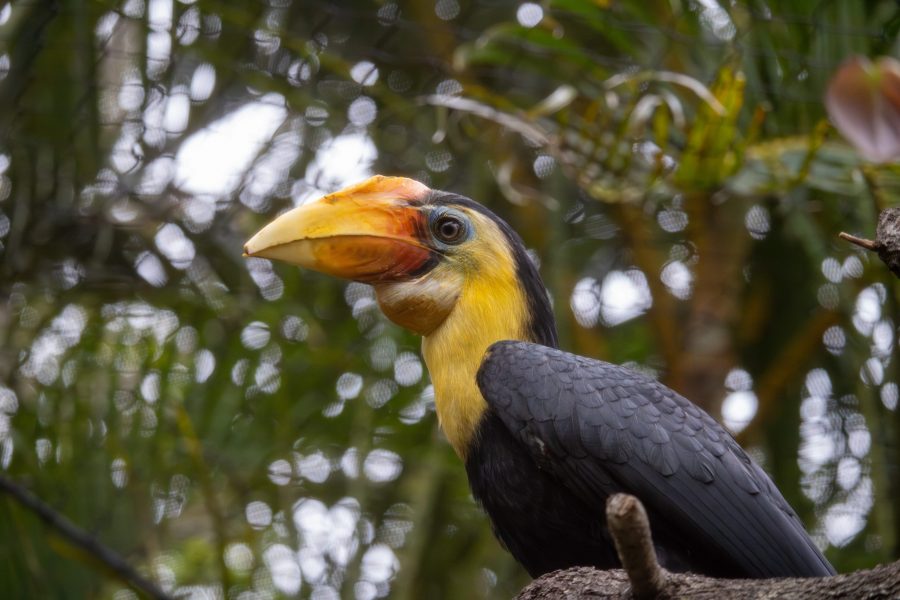

Have you seen Fig yet?
If you’ve visited the Zoo, you’ve likely met a lot of our more than 800 animal residents. Some animals are easy to spot, but others are often not as easy to see because of their habitat set up, their personalities or their sleep cycles among other things. We wanted to start a “Meet the Animals” section of our blog to introduce you to some of the residents that you may (or may not have) met yet!
We have an im-peck-able new Zoo resident to introduce. Fig the 1-year-old wrinkled hornbill has made her debut appearance in our Lands of Change loop, and we couldn’t be more excited to have her. Fig’s arrival comes as part of the Species Survival Plan, a program that manages animal populations in organizations accredited by the Association of Zoos and Aquariums to ensure healthy, genetically diverse groups and creates safeguard populations for endangered species.
While Fig was quite tentative during her first few weeks with us, she has since started showing off some of her true feathers. Many of her keepers have noted her calm yet curious personality.
“She has already started to come out of her shell and show us more of her unique personality,” said Lands of Change senior keeper Alyssa Pagan. “She is also just so pretty.”
There is a lot of preparation that goes into getting a habitat ready for a new animal. Our team prepped the space according to her specific needs, such as adding more hanging plants for her to hide behind and creating more perching. Her first few days were spent flying around and discovering all the new spaces, but she has since settled in and found her favorite spots.
Right now, Fig’s animal care team is slowly introducing her to her new day-to-day routine. Relationship building with all of her keepers is also a top priority for the team. This is done gradually, often with keepers just hanging out around her and being visible to her. Once Fig can relax with their presence, the next step is to have Fig become comfortable eating while keepers are in her space.
“It sounds very basic, but it is super important to build strong foundations,” said Alyssa.
Once Fig’s trust in her keepers builds, they can start more complex training sets, including blood draw training or voluntary scale training. These are both ways that Fig can learn to participate in her own healthcare, and it is a priority to have all of our animal residents comfortable with these types of interactions.
When Fig’s not getting to know her keepers, she loves exploring her new environment. She’s particularly taken a liking to the tallest branches at the top of her habitat. She’s also been seen basking under her heat lamp on chillier days or snacking on her favorite food items – blackberries and blueberries!
Our Zoo has been very successful with wrinkled hornbill breeding previously, and we’re hoping to continue building on the legacy that former animal residents, Gomez and Morticia, left behind. When Fig is old enough, we hope to find her perfect match through the Species Survival Plan and help to continue restoring the population of this rare, endangered bird.
In their native range of Southeast Asia, wrinkled hornbills are facing threats from habitat loss due to the logging industry and illegal hunting.
“I hope by seeing her, [our visitors] will learn more about how magical this species is, and more conservation efforts will be put forth,” said Alyssa.
Brevard Zoo is an independent, not-for-profit organization that receives no recurring government funding for our operating costs. Your generous support enables us to continue to serve our community and continue our vital animal wellness, education and conservation programs.